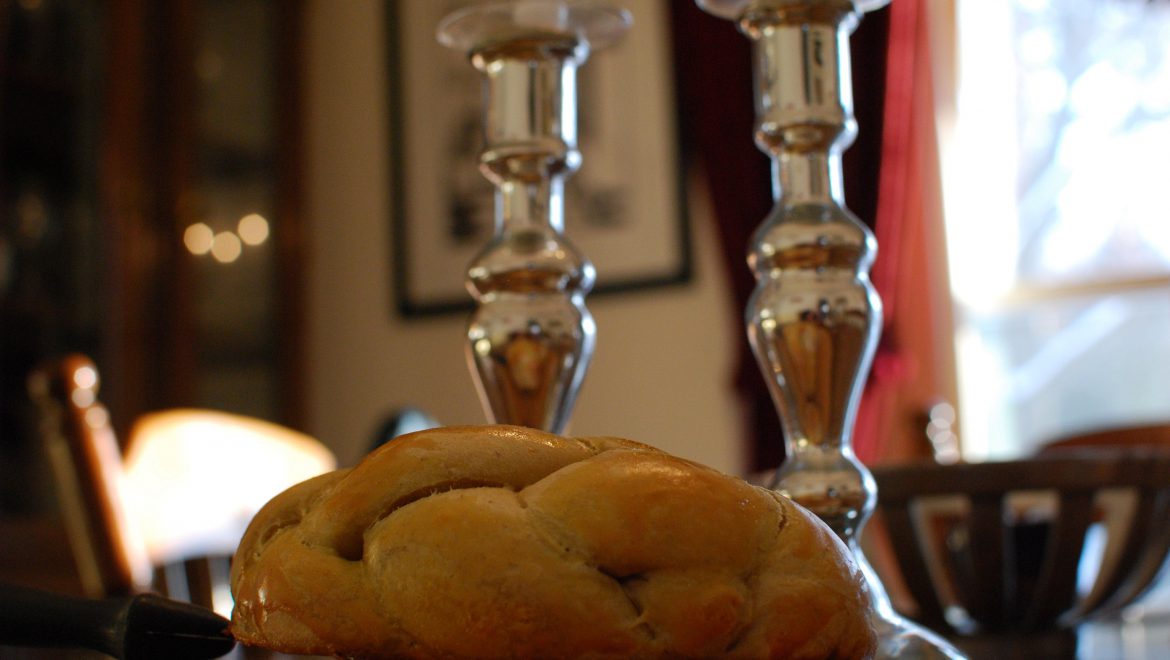
In this short post, Sarah Fishman describes the basics of the Kiddush ceremony, as part of an article introducing the Shabbat home rituals of candle lighting, kiddush over wine, and challah (bread). The author, a rabbinical student at Hebrew Union College-Jewish Institute of Religion in New York, includes the origins and instructions of how to perform the rituals, as well as some of the deeper meanings behind them. This article is from ReformJudaism.org.
Shabbat Home Ritual
I can still smell the Shabbatot of my childhood home. My mother’s chicken roasting in the oven, the smoke from the match that ignited our Shabbat candles, the sweet raisin challah my father bought at Zaro’s Bakery on his way home from work. Indeed, Shabbat at home is often sanctified through food, ritual and familial togetherness. Although a wonderfully diverse array of Shabbat practices exist among today’s Jewish families, disparate Shabbat tables coalesce around the following rituals, creating a vibrant tapestry of Jewish peoplehood and tradition.
Kiddush: Sanctifying Shabbat over Wine
Through Kiddush, we acknowledge two of God’s greatest gifts – the Creation of the world and the Exodus from Egypt – and express gratitude for Shabbat, the divine gift we receive every week. The Kiddush is comprised of two blessings: the first blesses the wine and the second distinguishes and sanctifies the day. The blessing over the wine is a rabbinic addition, designed to celebrate and “toast” God and our day of rest. During the Kiddush, many families cover their challot (plural of challah) with beautiful hand-made covers. The custom of covering the challah while reciting Kiddush assuages the conundrum of what to bless first. Bread, one the one hand, is the main component of the daily meal and is generally honored first, as wheat and grains are mentioned before grapes in the Biblical listing of the seven species (Deuteronomy 8:8). However, the Shabbat meal commences with the Kiddush, which is inextricably linked with drinking wine. Accordingly, we cover the challah to simulate its absence during the Kiddush, and thus justify blessing the wine before the challah.


